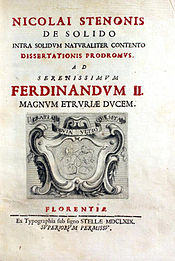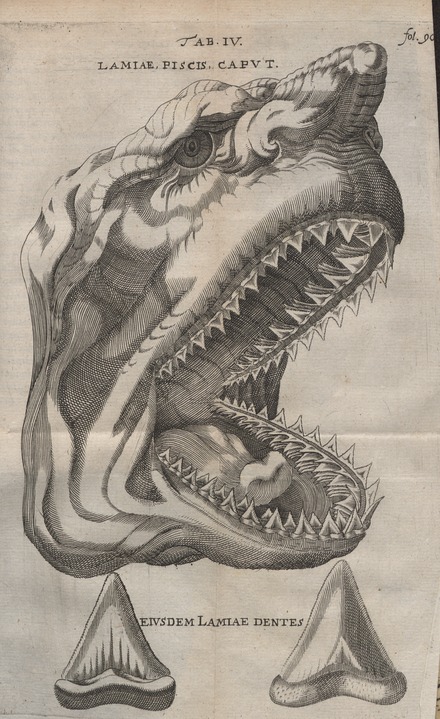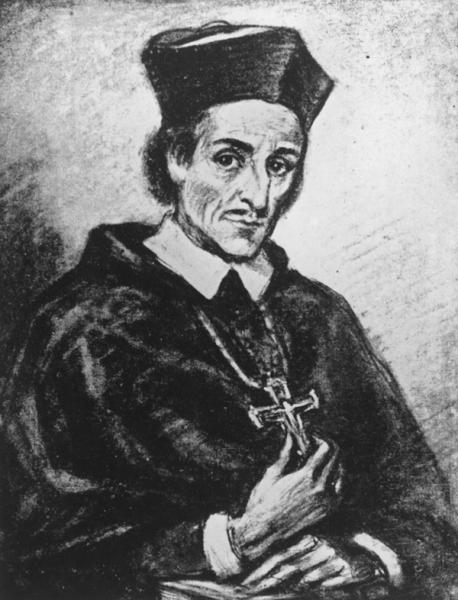“Profana a sacris non excludenda”[1]
The De solido intra solidum naturaliter contento dissertationis prodromus (The Prodromus to a Dissertation concerning Solids Naturally Contained within Solids) – originally published in 1669 in Florence, and dedicated to Ferdinando II de’ Medici, Grand Duke of Tuscany – is one of the most renowned works by Nicolas Stensen (Niels Steensen in Danish; Nicolaus Stenoni in Latin; often abbreviated as “Steno” in English), a Danish polymath scientist, then elected catholic bishop, who lived 1638-1686. The Prodromus’ fame is perhaps second only to Steno’s Discourse on the Anatomy of the Brain.

The Prodromus is often considered as the founding work of modern geology, and certainly a milestone in the geological literature. Scholars engaged in chemistry or materials science know it as the place where so-called Steno’s Law has been first formulated. The Law states that the angles between two corresponding faces on the crystals of any solid chemical or mineral species are constant and are characteristic of the species.
Which is the technical innovation that Steno introduced in geology with the Prodromus? Answering this question requires a closer look at the very title of the work. “Solids Naturally Contained within Solids”: when solids are concerned, it is not immediate to understand how they can come to be “naturally” contained one within another, especially as far as solids so closely adherent – as, e.g., fossils of organic substances within the rocks that cases them – are concerned. With the words of Steven J. Gould (one of the greatest twentieth-century evolutionary biologists), one can say:
“Posing a problem in a startling and novel way is the virtual prerequisite of great science. Steno’s genius lay in recognizing that a solution to the general problem of how solid bodies get inside other solids might provide a criterion for unraveling the earth’s structure and history.”[2]
Once this fundamental insight is in place, the Prodromus offers three key criteria at the basis of modern geology. The first is known as the “principle of molding”, according to which the solid (e.g. a shell) that impresses its form on another solid (e.g. a sedimentary rock) can be known to have solidified before the one that cases it. The second principle – sometimes called the “principle of superposition” – states that lower geological strata can be known to be older than higher ones. These two principles allow to establish a chronology of geological entities: a history of the Earth’s crust. The third principle – establishing a criterion of similarity between causes starting from the similarity of effects – is stated with great clarity at the beginning of the second part of the Prodromus:
“If a solid substance is in every way like another solid substance, not only as regards the conditions of its surface, but also as regards the inner arrangement of parts and particles, it will also be like it as regards the manner and place of production.”[3]
By establishing these three criteria, de facto, Steno laid the foundations for modern geology (and also launched the conception of geology as a historical discipline, as we will see better below).

Whence did such revolutionary idea come from? Steno was primarily an anatomist. As stressed elsewhere, he was convinced that understanding human (neuro)anatomy would have required comparative studies considering other animals’ anatomies. For this reason, he was used to dissect many kinds of creatures, among which sharks attracted his interest. At that time, there were ongoing discussions about the so-called “glossipetrae” (tongue-stones). They actually are fossilized sharks’ teeth, but at Steno’s time – also because of diffused literary interpretations of the Sacred Scriptures and their influence on theological views – the glossipetrae were interpreted as stones at all similar to shark teeth but stones nonetheless, possibly created by God as they were found (and created just a few thousands years before, according to the timings then attributed to Creation). Dissecting a shark head that he received for his studies from Livorno, in Italy, he could empirically ascertain the precise similarity of the teeth he observed in the shark’s mouth with the glossipetrae. Thus, he concluded that the glossipetrae – including those that at that time “could be collected by the barrels, especially in Malta”[4] – actually were fossils of shark teeth. Therefore, the main example of “solids naturally contained within solids” that allowed Steno to lay the foundations of modern geology, actually were the glossipetrae.
Besides the specific interest for the history of geology, what does it make the Prodromus a valuable text also from the interdisciplinary viewpoint? Two themes are worth to be mentioned in conclusion. First, Steno’s Prodromus established geology as a historical discipline, i.e. a discipline concerned with a sequence of events in time that can be reconstructed thanks to the traces (i.e. “vestiges”) those events have left. Steno explicitly compares geology as a historical discipline, and history as the study of human past, also stating – from an epistemological viewpoint – that in both disciplines the inference to the best possible explanation is the methodological guide, thanks to which one can propose the possible past causes for presently unveiled traces. (Incidentally, it is this very point that attracted, three centuries later, the attention of Gould, who, as an educated evolutionary biologist, regarded his own discipline essentially as a historical science.) He also adds that the kinds of traces geology can be built upon (i.e., the solids within solids) are much more reliable than the traces (i.e., humanly produced documents or artifacts) from which history can be drawn. The latter, indeed, are just “signs” and can also be produced with intrinsic mistakes, intended ambiguity or even for deception; the former, instead, are “vestiges”, i.e. traces of the things themselves without, let us say, mediation by human intention or convention[5]. In a nutshell, therefore: nature does not lie!

The second point to be stressed concerns Steno’s conversion to Catholicism, which some scholars regard as the cause for Steno’s abandoning scientific research. A different interpretation sees strong continuity between the reasons leading Steno to his scientific work and those beneath his conversion: admiration and praise for God’s work. Linking the Prodromus with some passages from Chaos (1659), an early work by Steno[6], commentators state that in Steno’s mind “The study of geomorphology, for example, is not a departure from reflection on the divine, but rather an inflection of it.”[7] Thus, as the epigraph to this document recites, “Profana a sacris non excludenda” (profane things are not to be excluded from sacred ones).
[1] Steno, Chaos, col. I, fol. 28r–v. Quoted in Cf. J.E.H. Smith, “Thinking from Traces: Nicolas Steno’s Palaeontology and the Method of Science,” in Steno and the Philosophers, eds. R. Adrault and M. Laerke (Brill, Leiden and Boston 2018), pp. 177-200, here p. 197.
[2] S.J. Gould, Hen’s Teeth and Horse’s Toes. Further reflections in natural history, W.W. Norton & Company, New York & London 1984/19942 (Orig. 1983), p. 70.
[3] N. Steno, De solido intra solidum naturaliter contento dissertationis prodromus, Florence: Ex typographiae sub signo Stellae 1669, p. 16. Original Latin text: “Si corpus solidum alij corpori solido, non modò quà superficiei conditiones, sed etiam, quà intrisecam partium particularumque ordinationem per omnia simile fuerit, etiam quà modum, & locum productionem illi simile erit.”
[4] S.J. Gould, Hen’s Teeth and Horse’s Toes., cit., p. 71.
[5] Cf. J.E.H. Smith, “Thinking from Traces,” cit., spec. p. 189.
[6] For a synthetic study on this work and its significance, see G.D. Rosenberg, “Nicholas Steno’s Chaos and the shaping of evolutionary thought in the Scientific Revolution,” Geology 34 (2006): 793-796.
[7] Cf. J.E.H. Smith, “Thinking from Traces,” cit., p. 197.